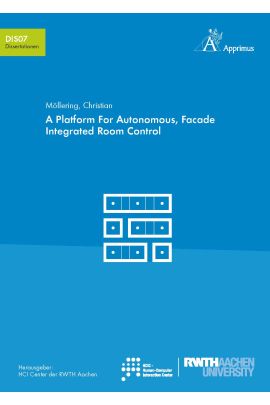Active systems in a building have enormous potential in terms of sustainability and comfort. While they are still not very much integrated in early design phases, many building concepts implicitly and strongly rely on such technical systems. Due to the complex configuration of active system components, which is crucial for the success of an installation, most buildings, once erected, are driven far from optimum. When operation starts, programmers of the technical systems, who could optimize, have long left the building.
Autonomous, entirely self-configuring, facade-integrated room controllers, which are placed at each building axis, may lead to profound improvements in functionality, cost and performance of a building. With a more detailed look it turns out, that a major topic of self-configuration is self-localization. The concept of the work at hand therefore focusses on the self-localization and BIM interaction of axis controllers. A swarm of self-organizing controllers arises and builds the foundation for an ever learning building system.
| Autor | Möllering, Christian Martin |
|---|---|
| Lieferzeit | 3-4 Tage |
| Gewicht | 0.28 kg |
| Erscheinungsdatum | 13.06.2017 |
Schriften des HCI Center der RWTH Aachen University
A Platform For Autonomous, Facade Integrated Room Control
Kurzbeschreibung
Active systems in a building have enormous potential in terms of sustainability and comfort. While they are still not very much integrated
in early design phases, many building concepts implicitly and strongly rely on such technical systems. Due to the complex configuration of active
system components, which is crucial for the success of an installation, most buildings, once erected, are driven far from optimum. When
operation starts, programmers of the technical systems, who could optimize, have long left the building.

